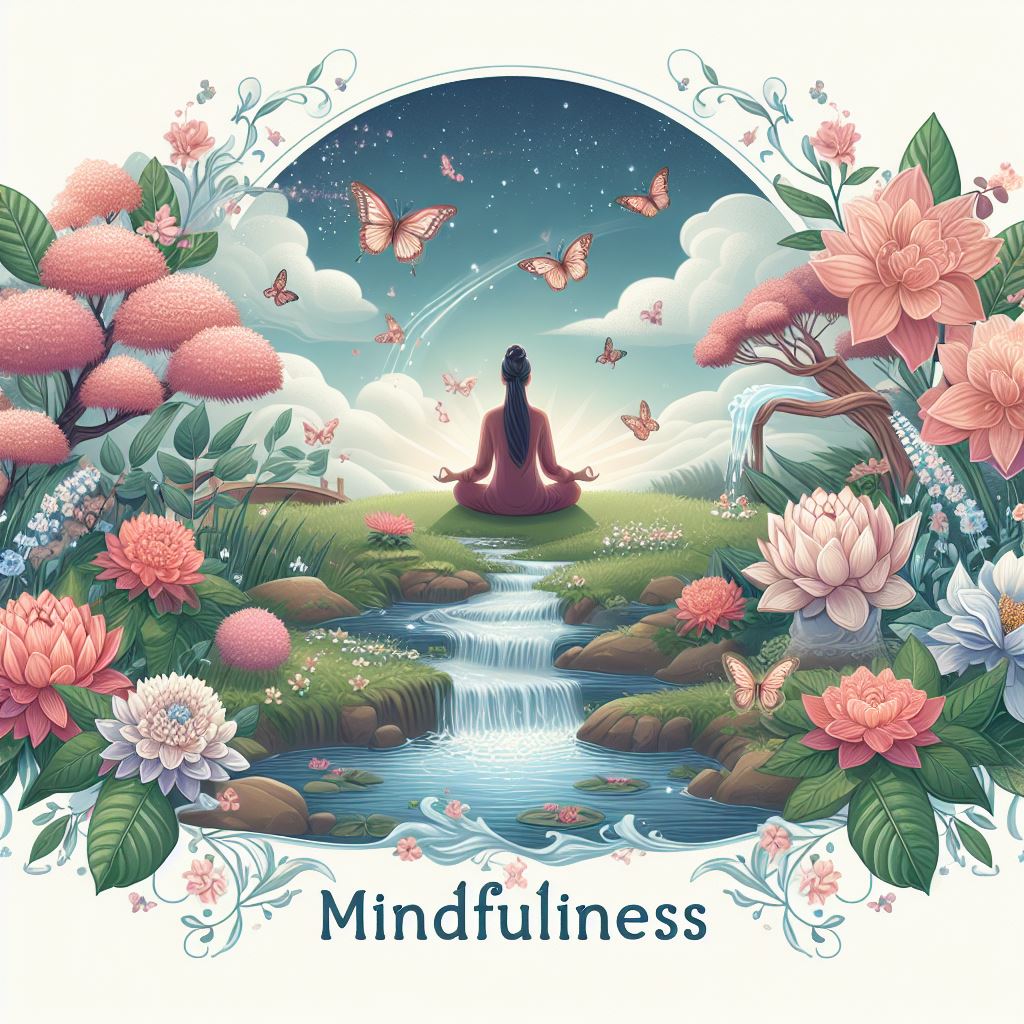Cultivate Happiness: Simple Practices for Everyday Gratitude
Last Updated on April 29, 2024
Gratitude isn’t a fleeting feeling of appreciation that washes over us after a kind gesture or a stroke of luck. It’s a conscious cultivation of an attitude that allows us to recognize and cherish the positive aspects of our lives. This post explores the transformative power of gratitude, exploring its profound impact on our mental well-being, relationships, and overall happiness.
We’ll begin by unpacking the essence of gratitude itself. It’s more than a simple “thank you.” Gratitude acknowledges the good in our lives, both the grand triumphs and the quiet joys. It recognizes the role that others play in shaping our experiences, fostering a sense of connection and indebtedness.
But why cultivate gratitude? Research paints a compelling picture. Gratitude has been scientifically linked to a multitude of benefits, including improved mental and physical health. Studies suggest that grateful individuals experience lower levels of stress, anxiety, and depression, while also reporting stronger immune systems and better sleep quality.
Perhaps the most transformative power of gratitude lies in its ability to strengthen our relationships. Expressing gratitude to loved ones validates their contributions to our lives and deepens our connections. Gratitude can even extend beyond personal interactions, fostering a sense of community and belonging.

Cultivating an Attitude of Gratitude: Shifting Your Focus
Here are some practical tips on how to practice gratitude in your every day life.
1. The Power of Mindfulness: Present Moment Awareness for a Grateful Heart
Mindfulness is the practice of paying attention to the present moment without judgment. By quieting the constant chatter of the mind and focusing on the here and now, we become more attuned to the simple joys and blessings that often go unnoticed. This heightened awareness lays the foundation for a more grateful outlook.
- Simple Mindfulness Practices: Techniques like mindful breathing or mindful walking can help cultivate present moment awareness.
- Engaging Your Senses: Savor the taste of your food, feel the warmth of the sun on your skin, or listen attentively to the sounds around you. These simple acts can cultivate a sense of appreciation for the sensory experience of life.

2. Appreciating the Little Things: Finding Abundance in Everyday Moments
The tendency is often to focus on grand gestures or significant achievements. However, cultivating gratitude thrives on recognizing the abundance in everyday moments, big or small.
- The Gratitude List: Take a few minutes each day to jot down a few things you’re grateful for. It can be anything from a steaming cup of coffee to a meaningful conversation with a loved one.
- Reframing Challenges: Even difficult experiences can be reframed as opportunities for growth and learning. Gratitude allows us to acknowledge the challenges while appreciating the lessons learned.
By incorporating these practices into your daily routine, you’ll train your mind to focus on the positive aspects of life, fostering a deeper sense of gratitude.

Daily Practices for Gratitude: Sowing the Seeds of Appreciation
Gratitude isn’t a passive state of being; it requires cultivation. This chapter equips you with practical tools to weave gratitude into the fabric of your daily life. Here, we’ll explore practices that can shift your focus, heighten your awareness of the good, and foster a lasting sense of appreciation.
1. Gratitude Journaling: Cultivating Thankfulness Through Reflection
Keeping a gratitude journal is a powerful way to cultivate an attitude of gratitude. The simple act of taking pen to paper and reflecting on the positive aspects of your life reinforces neural pathways associated with gratitude.
- Developing Your Gratitude Journal: A dedicated notebook or even a designated section in your existing planner works perfectly.
- Finding Your Rhythm: Aim for consistency, but be flexible. Daily journaling is ideal, but even a few times a week can yield significant benefits.
- Prompting Your Appreciation: Consider prompts to guide your reflection. Examples include: “What am I grateful for today?”, “Who made a positive impact on my day?”, or “What simple joy did I experience?”
2. The Gratitude Reflection: A Guided Practice for Appreciation
Carve out a few quiet moments for a guided reflection exercise. Find a comfortable position, close your eyes, and take a few deep breaths to center yourself.
- Recall the Positive: Mentally revisit a recent experience that evoked feelings of gratitude. Allow yourself to fully immerse yourself in the memory, reliving the sights, sounds, and emotions associated with it.
- Acknowledge the Source: Consider who or what played a role in this positive experience. Was it a kind gesture from a loved one? A moment of beauty in nature? Acknowledge the role these elements played in your happiness.
- Express Your Thanks (Silently or Aloud): Internally or verbally express your gratitude for this experience.
This simple practice, repeated regularly, strengthens your neural pathways for gratitude and cultivates a more appreciative mindset.
Expanding Your Gratitude Practice: Cultivating Abundance Through Generosity
Gratitude isn’t a solitary pursuit; it thrives on connection and outward expression. Exploring how expanding your gratitude practice can enrich your relationships and foster a sense of abundance in your life.
1. The Power of “Thank You”: Expressing Appreciation and Strengthening Bonds
A heartfelt “thank you” is more than a polite formality; it’s a potent tool for strengthening relationships. Taking the time to express gratitude acknowledges the positive impact others have on our lives and deepens our connections.
- Specificity is Key: A generic “thanks” is nice, but specific thanks are even more powerful. Highlight what you appreciate about someone’s actions or words.
- Consider Written Gratitude: A handwritten thank-you note expresses a deeper level of appreciation and creates a lasting memento for the recipient.
2. Gratitude and Faith: A Spiritual Connection (Optional)
For many, faith plays a central role in cultivating gratitude. Religious texts are filled with verses expressing thankfulness to a higher power. Gratitude practices like prayer or attending religious services can deepen one’s spiritual connection and foster a sense of peace and contentment.
- Bible Verses about Gratitude: Explore passages like Psalm 100:4 (“Enter his gates with thanksgiving and his courts with praise; give thanks to him and bless his name”) or Philippians 4:6 (“Do not worry about anything, but in everything by prayer and supplication with thanksgiving let your requests be made known to God”).
3. Serving Others in Community: Expanding Gratitude Beyond the Self
Gratitude isn’t a passive emotion; it flourishes through action. Serving others in your community allows you to express thankfulness for your own blessings while creating a positive impact on the world around you.
- Volunteer Your Time: Organizations of all kinds rely on volunteers. Donate your time and skills to a cause you care about.
- Random Acts of Kindness: Simple gestures of generosity, like holding a door or paying for someone’s coffee, can brighten someone’s day and foster a sense of connection.
Conclusion: The Enduring Bloom of Gratitude
Gratitude isn’t a fleeting feeling; it’s a lifelong journey of cultivating appreciation for the richness of life. By incorporating the practices explored here, you’ll nurture a sense of gratitude that permeates your daily experience.
1. The Ripple Effect of Gratitude: A Positive Force in the World
When we express thankfulness to others, it strengthens our relationships and fosters a sense of connection. Random acts of kindness inspired by gratitude create a ripple effect of positivity, uplifting not only the recipient but also the giver. As gratitude flourishes within us, it has the potential to touch the lives of those around us, creating a more positive and supportive community.
2. Maintaining Your Gratitude Practice: Nurturing Appreciation for the Long Haul
Like any skill, gratitude requires consistent effort to maintain its potency. Here are some tips for integrating gratitude practices into your daily routine:
- Schedule Time for Reflection: Set aside a few minutes each day, even if it’s just a quick mental note, to reflect on something you’re grateful for.
- Incorporate Gratitude Reminders: Place visual cues, like sticky notes or photos, in your environment to prompt moments of gratitude.
- Find a Gratitude Buddy: Share your gratitude practice with a friend or family member. Hold each other accountable and celebrate your progress together.
By weaving gratitude into the fabric of your daily life, you’ll cultivate a lasting sense of appreciation that fosters happiness, strengthens relationships, and allows you to experience the fullness of life. Remember, gratitude isn’t about ignoring challenges; it’s about acknowledging the good amidst the difficulties. It’s a perspective shift that empowers you to face life’s inevitable hurdles with greater resilience and a more positive outlook.
So embark on this journey of gratitude. Embrace the simple practices, savor the little joys, and witness the transformative power of appreciating the good in your life.



